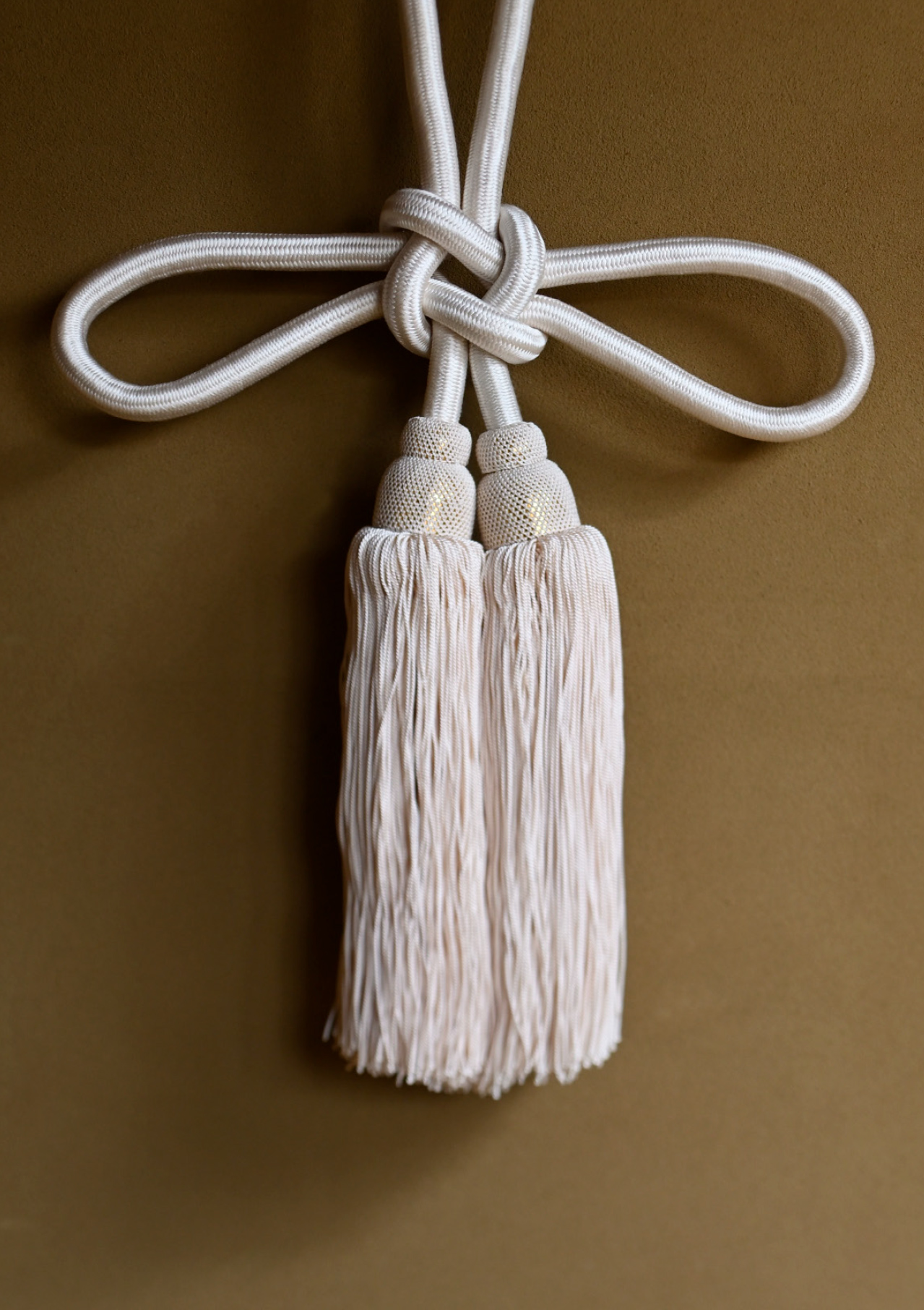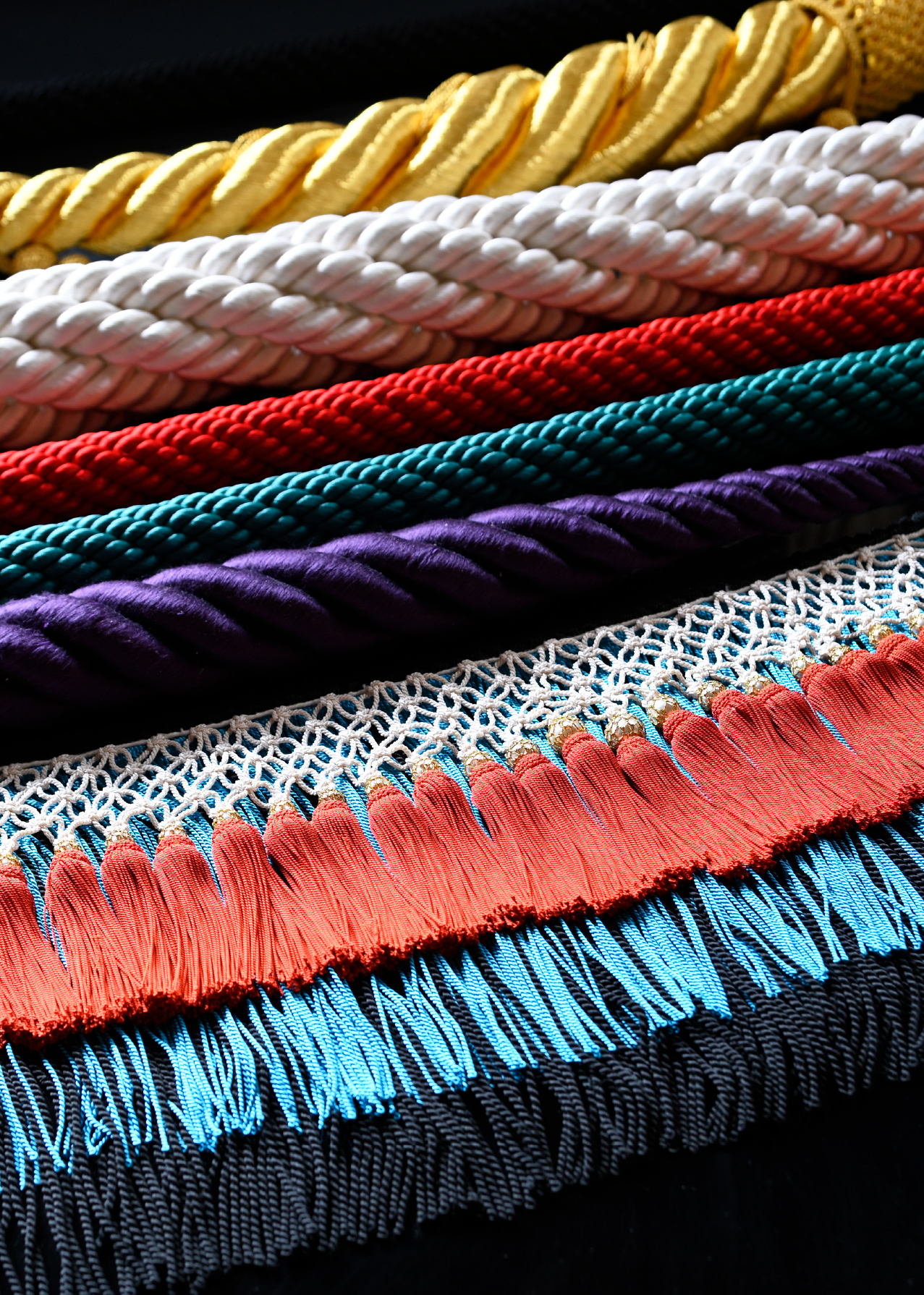京房ひも · 撚ひも 京房ひも工業協同組合
KYO-FUSAHIMO · KYO-YORIHIMOKNOT TASSELS AND TWISTED CORDS 1
1
- 総角結びの飾り。アートとして壁に飾っても美しい。
京房ひも・撚りひもは、絹などの糸を撚り合わせてつくる撚りひもをさまざまな形に結び、房を垂らした装飾品を指します。組ひもとの違いは、糸を組まず(編まず)に、撚ってひもづくりをすること。古くは神具や仏具、宗教的な祭礼などから、貴族の室内調度品や小物の装飾、武士の兜や武具、茶道・華道、さらに現代ではアパレルやインテリアのアクセントまで幅広く使われ、艶やかな撚りひもと揺れる房ひもが、荘厳さや華やかさを添えています。大きさもさまざまで、小さなお守りのようなものから、祭りのための1mを超すような大きなものまで、すべて手作業で製作されています。同じ力を均等にかけながら糸を撚らなければ美しい撚り目にならないため、職人の仕事には技と耐久力、忍耐力が要求されます。
Kyo-fusahimo and yorihimo are decorative items made twisting silk and other threads together in various shapes to form a cord with knots and hanging tassels. The difference with kumihimo braids is here the threads are not knitted but twisted to make the cord. Historically, knot tassel cords were used as Shinto and Buddhist paraphernalia, religious festivals, decoration for aristocratic furniture, samurai helmets and armor and for the tea ceremony and flower arrangement. In modern times, it is widely used for apparel and interior accessories, and the shiny twisted strings and swaying tassels add to the majesty and splendor. The handmade cords come in a variety of sizes, from small talismans to large ones over 1m long for festivals. The craftsman's work requires skill, endurance, and patience because a beautiful twist cannot be obtained unless the threads are twisted with the same pressure applied evenly.
 2
2
- : 房ひも・より紐の数々。いちばん上は、金糸を撚った贅沢なもの。多くの糸を一度に拠るものや、撚ったひも同士を何度も撚り合わせるものなど、手法により異なる表情を見せる。
(1,2 ともに坂田秀商店)
1: Agemaki-musubi decoration. It also serves as a beautiful work of art to hang on a wall. 2: Knot tassels and twisted cords. At the top is a luxurious piece of twisted gold thread. Varying the method produces different results, such as the one using many threads simultaneously, and one that forms cords by twisting strings over and over again. (1,2 Sakata Shū Shōten)

